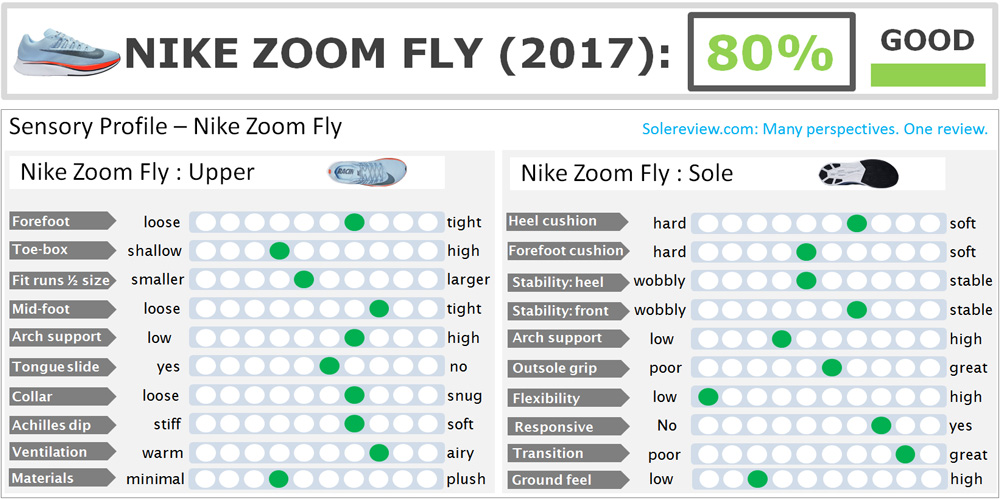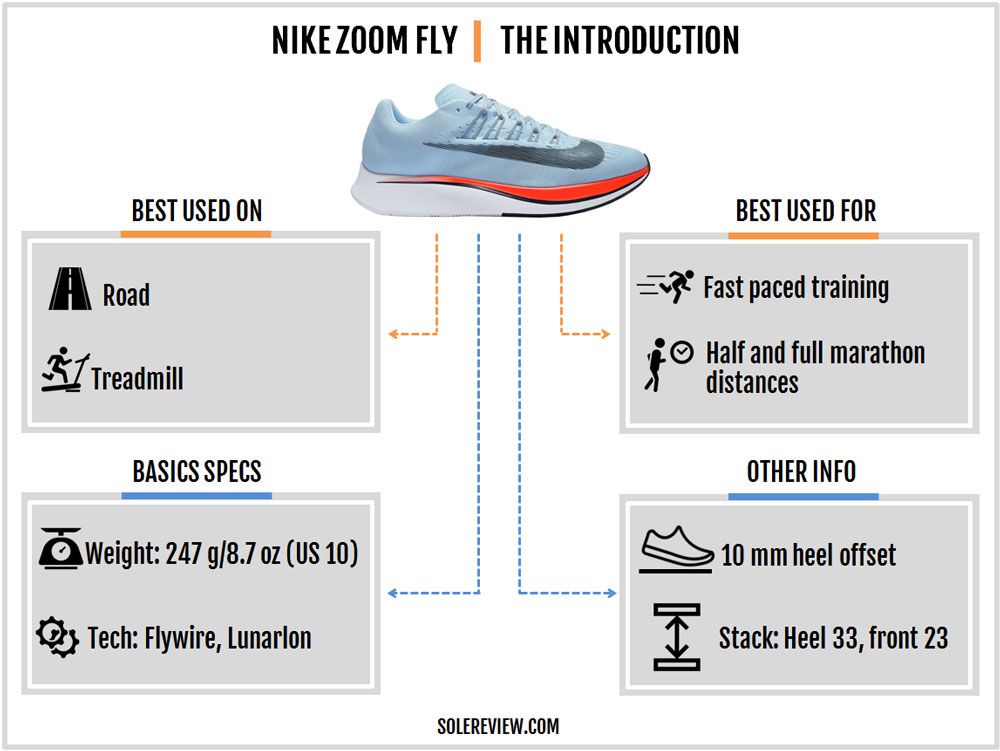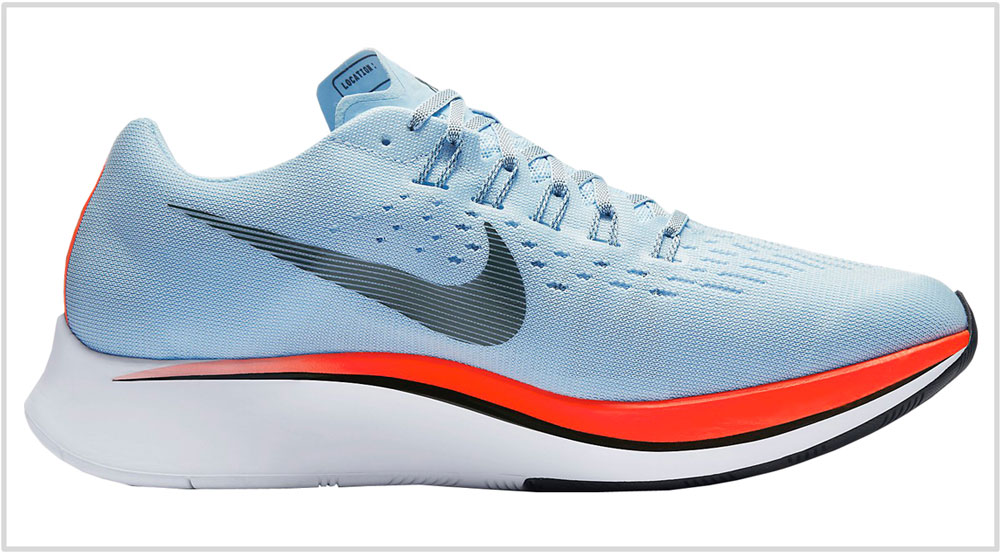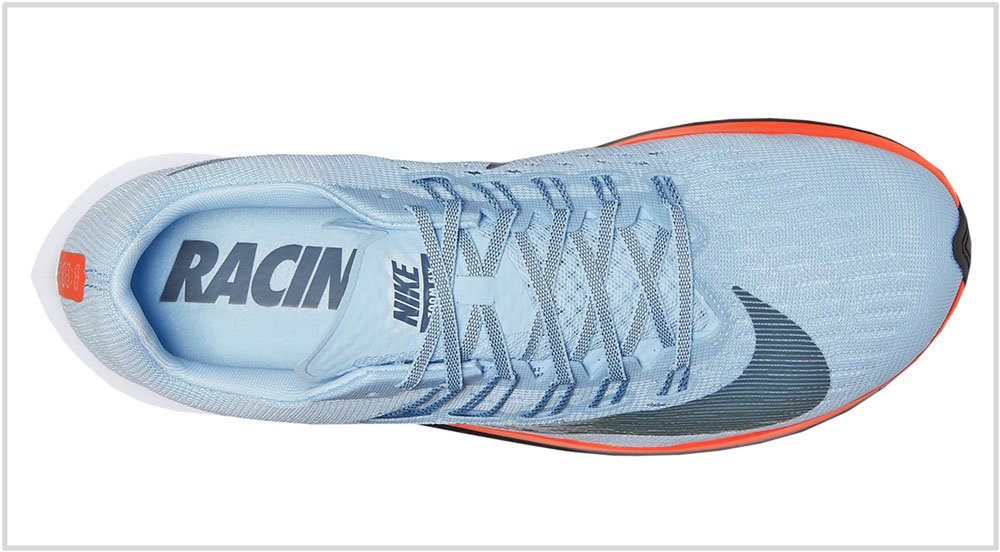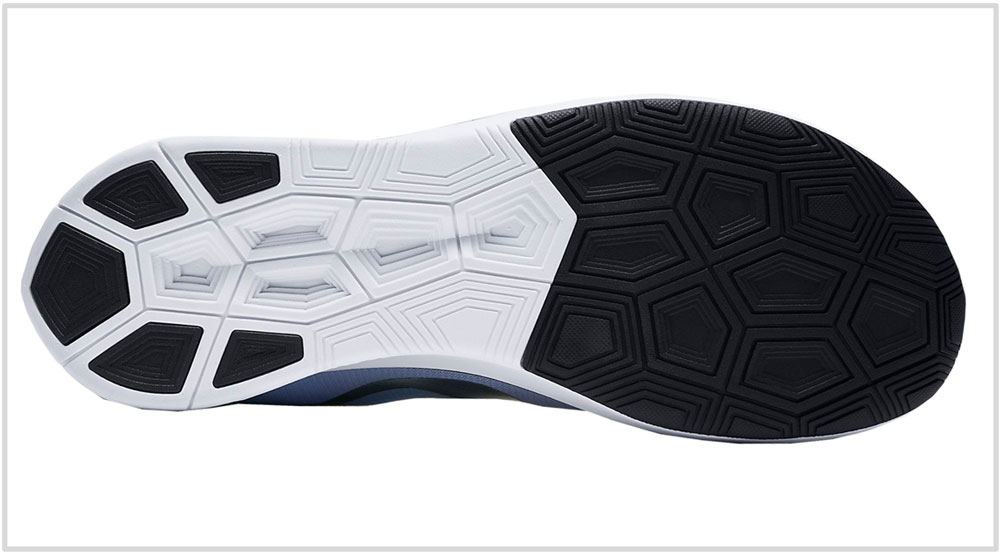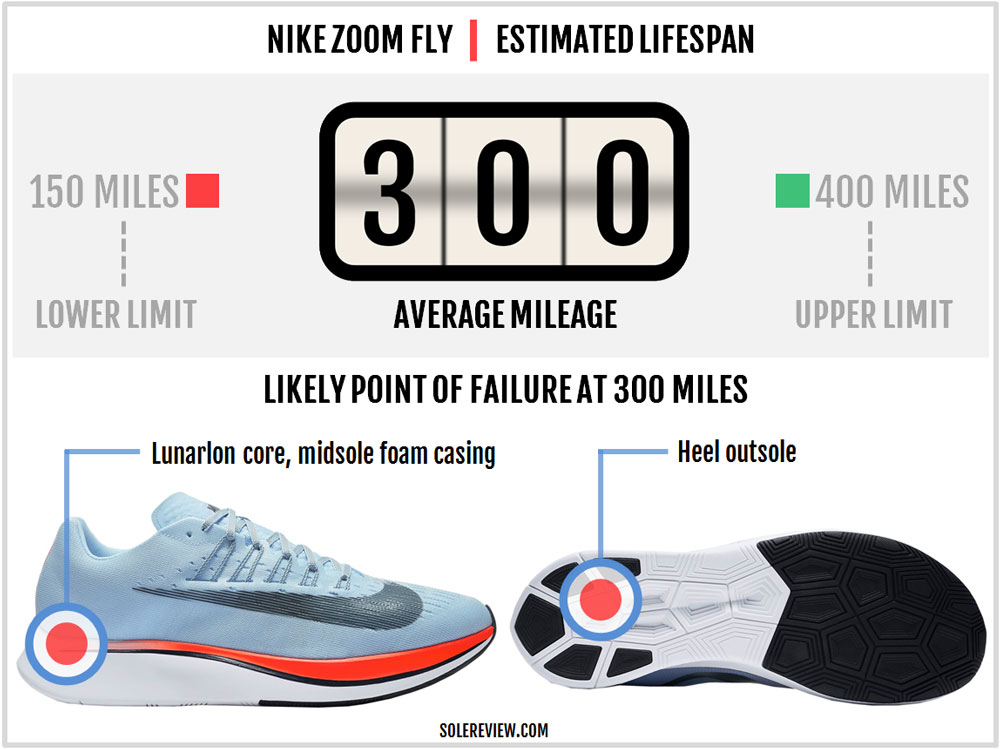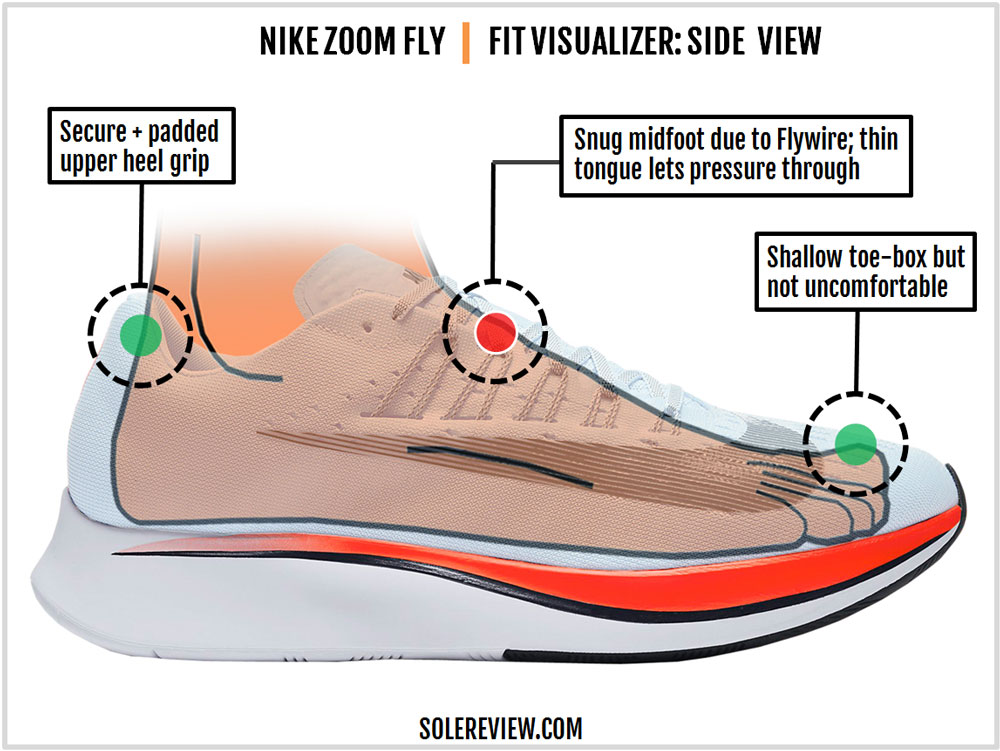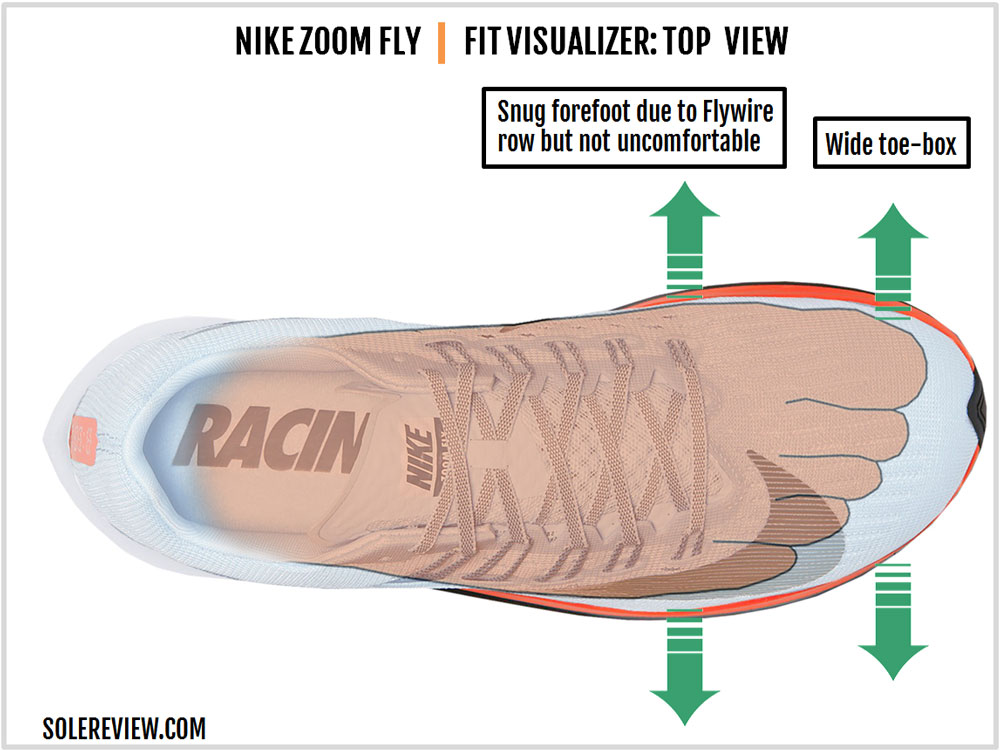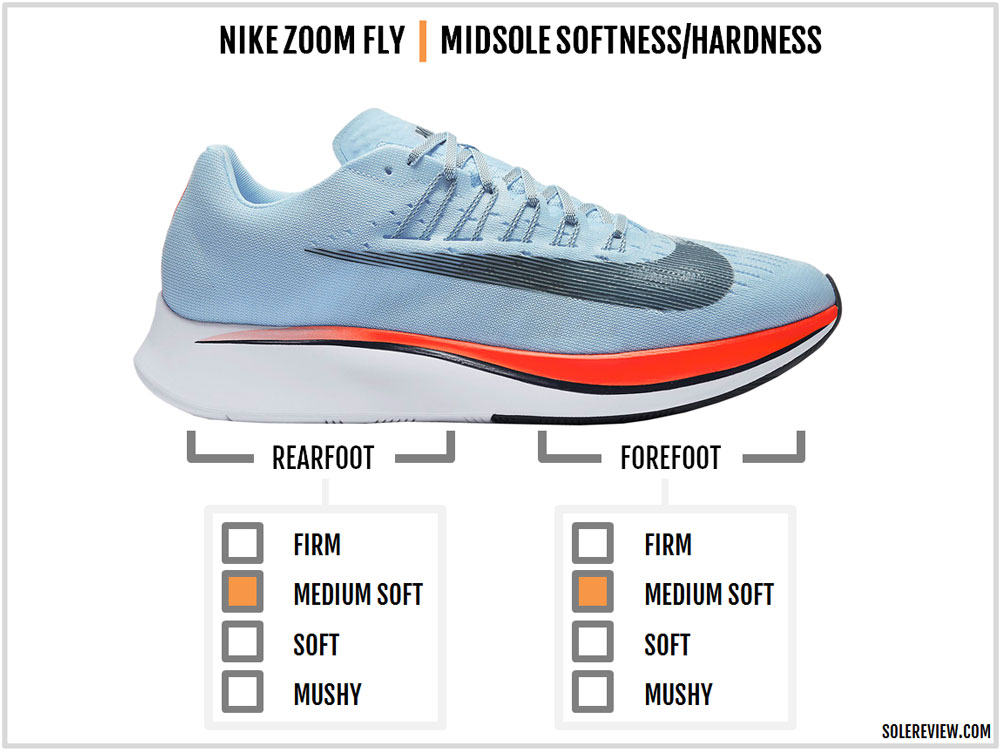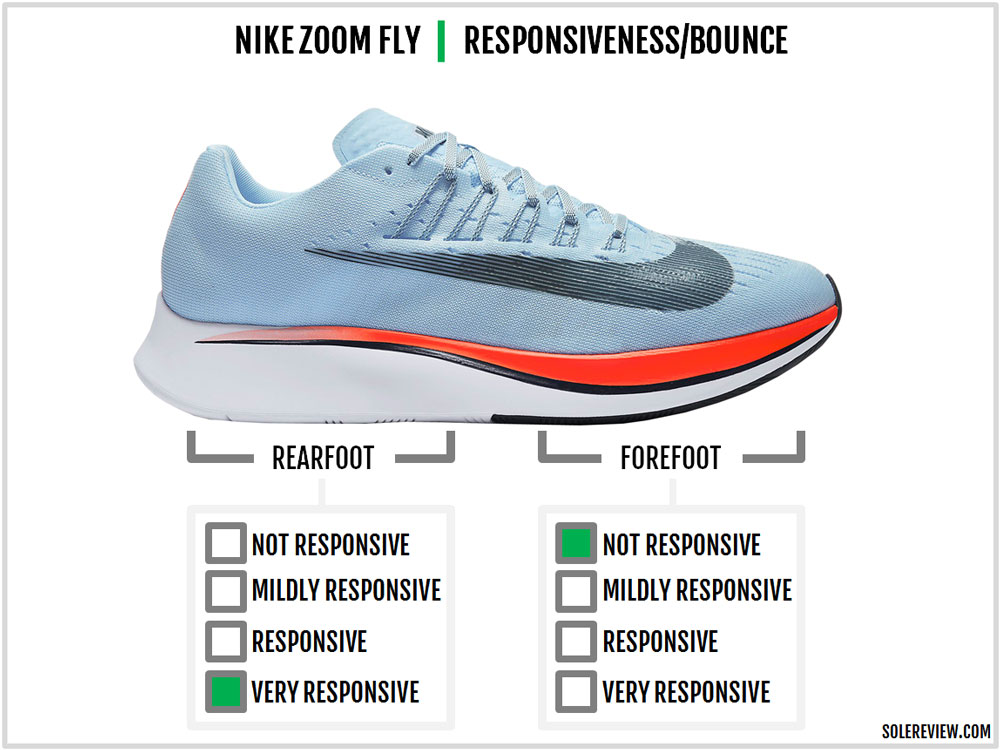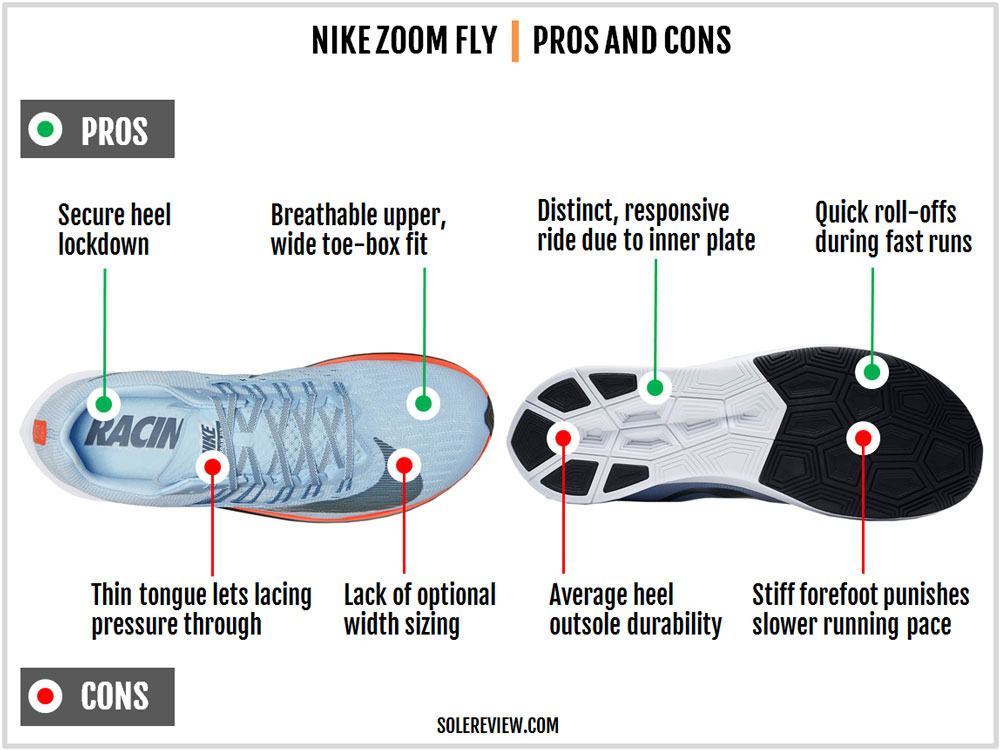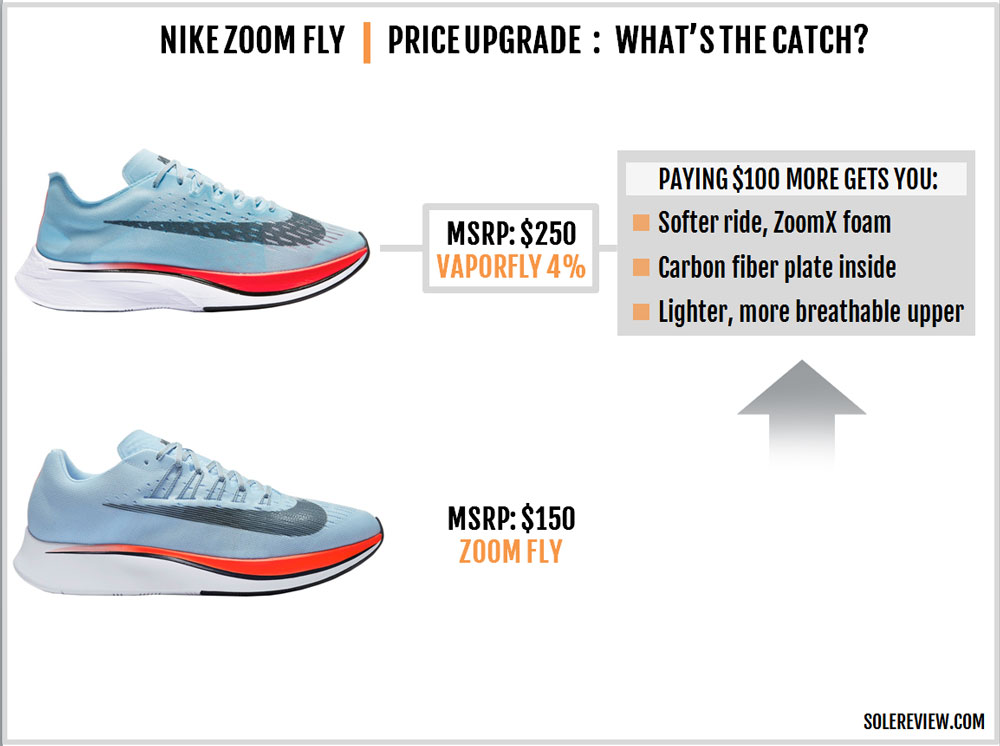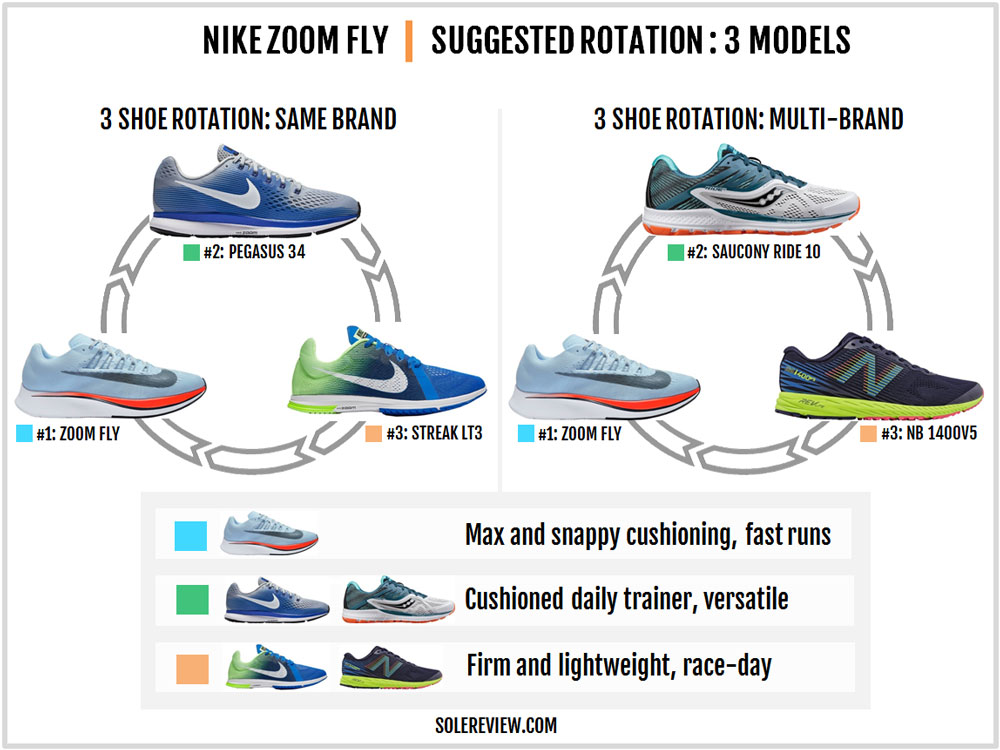INTRODUCTION
Unless you’ve been living under a rock, you must be familiar with Nike’s ‘Breaking 2’ project – the shoe behemoth’s initiative to break the 2-hour marathon barrier. Nike came so, so close to the goal.
In what was an impressive feat of athleticism, Eluid Kipchoge ran a marathon distance in a record 2.00.25, 2.32 seconds faster than the current world record. This recent piece in the Wired magazine covers the finer details with a comprehensive backstory.
For this event, Nike designed a concept shoe called the Zoom Vaporfly Elite. It had Nike’s brand new ZoomX midsole foam along with a Carbon fiber plate, and its distribution was extremely limited – used only by the athletes who participated in the breaking 2 project.
Since the concept shoe is out of bounds for us lesser mortals, the publicly available models are the Zoom Vaporfly 4% and the Zoom Fly. Both these shoes have a design language and feature set which is inspired by the athlete-only shoe. All three models have an upper with similar aesthetics and a midsole with the unique plate embedded within.
Though Nike also sells the Pegasus 34 with a similar paint-job, the cheaper model shares little in common with either the Vaporfly or the Zoom Fly.
And before you get confused – the name Zoom Fly is a misnomer. Unlike all previous Nike shoes where the word ‘Zoom’ in the name indicated the presence of a Zoom Air bag inside, this shoe is based on an all-foam platform. By the way, there was another Nike shoe by the same name a few years ago – that model did have a forefoot Zoom Air unit.
Coming to think of it, the usage of the word ‘Zoom’ in the Zoom Fly’s name is a bit odd. It neither has the namesake technology in the form of an Air bag, nor the newly introduced foam used in the Vaporfly Elite and the 4%.
The term Zoom is used here as a figure of speech, with Nike marketing the Zoom Fly as a ‘fast’ shoe. Zoom is an onomatopoeic word, descriptive as in ‘Zoom past,’ and has nothing with do with an actual Zoom Air bag.
Nike isn’t wrong there. The Zoom Fly is a fast shoe, regardless of its 33 mm heel stack. The new shoe owes its speed character to the unique, full-length Nylon plate embedded inside the midsole. The plate is tethered to the forefoot but has a relatively high range of movement under the heel, thus producing an effect akin to a springboard or diving board.
Internal plates or shanks aren’t a new concept. Shorter versions are commonly found in trail running shoes, racing flats and the like. The rigidity provided by the plate helps the stability and transition quality of the shoe, and in use cases like trail running, protection is the primary objective.
Mizuno is the only brand which uses a sizeable plate as a part of its midsole, and this gives all their shoes a characteristic ‘Mizuno-ness.’ Some of their models like the Creation and Prophecy use a full-length ‘Wave’ plate while others use a rearfoot-only plate.
Though Nike will be loathe to admit it, the Zoom Fly’s chunky midsole bears an uncanny resemblance to Hoka One One running shoes.
Hoka was the first brand to popularise the max cushioning trend; and surprisingly, while their shoes were cushioned beyond belief, the ride was efficient. A thick forefoot translated into lower flexibility, which in turn helped speedier toe-offs. We experienced this on the Hoka Clifton and the Bondi.
So vaguely speaking, the Nike Zoom Fly is a hybrid between a Mizuno and a Hoka. This unique approach to the midsole construction results in a ride quality which produces an experience like none other.
A thick forefoot stack with a high toe-spring is made even more rigid by the Nylon plate, and this makes the ‘roll-off’ character of the forefoot more pronounced than a Hoka. The plate extends all the way to the heel, where it is sandwiched between the two foam layers.
This design gives the Zoom Fly its distinctly responsive feel, making transitions fast even for a shoe this cushioned. Since the thinner end of the plate is ‘floating’ inside a thick stack of rearfoot foam, it has a far greater range of movement than, say, a Mizuno Wave Plate.
Distinct it may be, but the Zoom Fly isn’t for everyone. The stiff forefoot punishes those running any slower than a 6:50/mile (4:20/km) pace; because when you go slow, the foot tries to bend the forefoot instead of rolling over it.
As the plate is highly resistant to bending, trying to flex it will cause fatigue – likely manifested by a sensation of numbness over long distance runs. This restricts the Zoom Fly’s versatility to specific use-cases only, so this shoe isn’t a do-it-all kind.
The moral of the story is: If you run fast, continue reading the review. If you’re planning to use the Zoom Fly as an easy run shoe, then we strongly advise not to. Get a plate-free Hoka or a regular trainer like the Pegasus 34.
DESIGN AND MATERIALS
The Zoom Fly’s design is modeled on the higher-end Vaporfly Elite (commercially unavailable) and the $250 Vaporfly 4%. The exterior profile is very clean; the upper is made of a single-piece engineered mesh (aka the Flymesh) with Flywire assisted lacing.
Some structure comes in the form of the internal heel counter (albeit small) and a pliable stiffener giving shape to the toe-box. Unlike the Vaporfly 4% which has a deconstructed, raw-edge heel, the Zoom Fly packs plenty of foam padding – which is somewhat similar to how the Pegasus 34’s heel is designed.
The mesh is lightweight and breathes well, but has more thickness than the Vaporfly. The VaporFly 4% uses a mesh which feels similar to the Streak 6; very thin and lots of pores for ventilation.
Also, on both the Vaporfly and the Streak, the lacing does not use Flywire and instead passes through the loops (formed by the upper turning inwards) connected to an internal band. The Zoom Fly lacks this strap, and all eyelets are punched into the fabric panel reinforced with a transparent laminate. Flywire cords pass through all the lacing rows except for the last heel-lock eyelet.
The tongue has no padding at all. Most of it is made of composite mesh, and the flap has fused synthetic for strength. The flap edges which come in contact with the foot are lined with soft artificial suede – this is something which we’ve seen on past Streak models.
Interesting, the Zoom Fly’s tongue has an asymmetrical flap design with a notch on the inner edge. We’re wondering where we had seen that before – oh right, the Hoka Clifton had a similar notch, except that it wasn’t asymmetrical. It seems that the maximal midsole template wasn’t the only thing inspired by Hoka One One.
And what does this notch do anyway? It locks down on the foot instep better, hence minimizing tongue slide if not eliminating it. There’s no sleeve inside the Zoom Fly, so this is a useful feature.
The laces are nice. They’re the flat kind which are quick to cinch. However, because of the minimal tongue and the Flywire, the lacing pressure is felt through the thinness of the material.
There isn’t much detailing over the upper – just the large Swoosh logo with ‘speed streaks,’ and the reflective strip over the heel. The strip is a novel way of showing reflectivity; when lit up, the left shoe displays the ‘Racing’ text and the Swoosh logo. The right shoe displays digits in a racing timer format – pretty cool.
Not counting the hard internal plate, the Nike Zoom Fly has a dual-density midsole with a 10 mm (33 R, 23 F) heel-to-toe gradient. What you see on the outside is the EVA foam casing; inside, there’s a separate (and softer) Lunarlon core with the stiff Nylon plate below it.
It is worth noting that the outer midsole has a paint scheme which is an approximate representation of the construction inside. You can see this black paint line which begins in the middle of the forefoot stack and flares upwards towards the heel.
One might think that the plate is just under your heel, but it isn’t. Rather, it’s located nearly halfway through the heel stack – to be precise, splitting the midsole height in a 60:40 ratio. Meaning that 60% of the foam stack is below the hard plate, with the rest (and softer part) above it. Since the Nylon plate is securely anchored in the front, the tail-end has a relative freedom of movement.
The Lunarlon core is also full length, with the forefoot section being considerably thicker than the rearfoot. This aligns with the design of the Nylon plate which happens to be thicker and stiffer in the front and tapers thin under the rearfoot.
There’s another reason why the Nylon plate is so stiff under the forefoot. Sure, the plate is thicker, but it is also corrugated. Ridges are molded lengthwise (not sideways like a flex groove), so this leaves little margin for the plate to bend.
This isn’t Nike’s first foray into the full-length plate business. Shoes in other categories like football/soccer have had carbon fiber plates, except that they were uniform in thickness. Of late, Nike running shoes seem to be taking more than a leaf out of football’s playbook. The Lunarepic Hi was inspired by a Nike football shoe, and now this.
If you look past the paint job, the external midsole doesn’t have any detailing. The sidewalls are flat on either side, and the base goes from wide near the outsole to slimmer near the top.
The heel bevel (angle) has an unusual location. Instead of being biased towards the outer side – because that’s where most rearfoot strikers would land – it is angled right up the center.
The front has a high toe-spring, and this works great in combination with an inflexible forefoot. We’ve experienced this tried-and-tested combination on shoes such as the Mizuno Prophecy and the Hoka Clifton, both of which had a stiff forefoot with a high toe-spring. Combine the toe and heel spring, and you have a rocker shaped midsole which was made mainstream by brands like Hoka and Skechers.
Flip the shoe over, and you’ll observe that the most of the outsole coverage is concentrated under the forefoot. There are a couple of reasons for this. One is that adding lots of rubber adds rigidity, which helps quicker roll-offs. The forefoot outsole isn’t rock hard either; the rubber used is a soft kind, similar to what’s used on the Vomero 12.
The other reason is that Nike is hoping that the most of the Zoom Fly users will be forefoot strikers, thus the need to increase traction and durability in that area.
In the rear, outsole rubber is used sparingly. Separate pieces are arranged in a horse-shoe shaped fashion around the heel periphery, and the midfoot is all foam. There’s a shallow cavity under the heel for cushioning.
The outsole design language is consistent. The outsole lugs are pentagonal-shaped, vaguely reminiscent of Nike Free outsoles, but without the deep grooving separating the lugs.
The midsole is topped with a removable, faux-Ortholite insole. It is made of a soft, blown-foam compound with a comfortable fabric on top. A foam strobel/lasting separates the insole from the midsole.
DURABILITY ASSESSMENT
Assessing the Zoom Fly’s durability is tricky because a lot will depend on your footstrike pattern. Forefoot strikers should have less to worry about, as the generous coverage of rubber in the front does a great job of managing wear and tear.
Rearfoot strikers will have mixed feelings about durability. The exposed areas surrounding the rubber pods will see faster wear than the rest of the outsole, and the centered angle under the heel doesn’t help.
Unlike most running shoes, the Zoom Fly’s heel is tapered upwards right in the center instead of being biased outwards, so expect that to aggravate the wear and tear situation if you’re landing on the trailing edge.
Then there’s the Lunarlon core to worry about. As we all know, Lunarlon doesn’t have a long lifespan, so expect a gradual loss of cushioning after a couple of hundred miles. The rest of the shoe might be ok, but the Lunarlon will degrade.
There are a couple of other minor niggles. The screen printing on the insole will peel off within the first month, but this isn’t a Nike specific issue – all shoes with a screen printed insole will face the inevitable.
You’ll also see a lot of wrinkles formed on the midsole wall. Here’s our theory on why this happens. The midsole sidewall are smooth and do not have compression groove, so the foam material has to crease somewhere.
We also have to consider the midsole’s inner construction. Each time you load weight on the Zoom Fly, you do so on the Lunarlon core and the plate below it. Since the hard plate has a certain range of movement, it tends to pull on the outer midsole casing and contributes to the creases on the sidewall.
If you’re running in areas with ambient dust, the creases tend to soil easily as the dirt gets trapped in its folds.
UPPER FIT AND FEEL
Considering that the Zoom Fly is a fast running shoe, the upper fit is relatively generous with interior space. The toe-box is wide and isn’t pointy like how traditional Nike racers are.
The toe-box is shallow, but the mesh above drapes over gently and does not box the foot in. And while the Zoom Fly isn’t as breezy as the Vaporfly 4% or the Streak 6, the interior feels adequately ventilated.
The forefoot is snug on the sides, and this is common to most Nike shoes which feature Flywire. The first row of these cords applies pressure on either side of the foot. This sensation is by no means uncomfortable, but we called it out because you should know the reason why the forefoot fits the way it does.
Thanks to the vertically placed Flywire cords, the midfoot fit is very secure while feeling smooth inside. The foot is held in place both by the slim midsole waist and the network of cords straining over.
That said, the tongue lets the lacing pressure filter through because of no padding inside. We pointed out the tongue notch earlier in this review; it minimizes the extent of tongue slide.
Out in the rear, the internal counter reinforced heel grips securely. Unlike the tongue, there are regular trainer levels of foam padding, so the interiors are comfortable.
RIDE QUALITY AND BEHAVIOR
Let’s get the basics out of the way first. As one would expect of a midsole with 33 mm and 23 mm stack heights, the Zoom Fly has deep cushioning, and then some.
The softness is focused in the upper regions of the midsole, with the blown foam insole and the Lunarlon core located above the plate. The Lunarlon core is much thicker inside the forefoot than it is the rear.
The forefoot is ultra stiff. The internal corrugation/ridges of the plate ensure unyielding stiffness, making the forefoot inflexible. While this is purposely designed to facilitate faster roll-offs, it also helps to lock the Nylon plate in place.
With the thinner and more flexible end of the plate ‘hanging’ or suspended under the heel, applying bodyweight over it makes it act as a springboard. This gives the rearfoot a very responsive feel, one which helps progress the foot to the forefoot quickly.
If you’re a rearfoot striker, the springboard effect will be more pronounced. On the other hand, forefoot strikers will find that transitioning to the heel feels very efficient, as the hard plate prevents the foot from sinking in too much – hence delivering a good gait economy.
The rearfoot is a great blend of cushioning and responsiveness, without any hint of marshmallowy-ness one would expect of a 33 mm foam stack. If you’re mentally trying to compare the ride of the Hoka Clifton or the Bondi, then let us make your task easier.
The Zoom Fly is firmer than both the Clifton and the Bondi. This is due to the combination of a couple of factors. The internal plate provides stiffness, and the compression molded outer midsole is firmer than what’s on the aforementioned Hoka shoes.
Forefoot transitions are mighty quick. Not only is that area stiff, but is complemented by a very high toe spring. The tip of the shoe is raised much higher than most shoes, and these two (the stiffness and the spring) partner very well to ensure seamless toe-offs.
The Zoom Fly’s forefoot transitions remind us of the 2012 Mizuno Prophecy, another shoe with an extremely high toe-spring and a stiff frontend. On the Prophecy, you felt that the foot was automatically being propelled forward, and the Zoom Fly’s behavior resembles that.
But there’s a catch. The Zoom Fly isn’t for everyone, and you should know this before spending $150 on a shoe which might not be suited for your needs. Take all reviews (including this one) with a large grain of salt, because at best reviews only help runners make an informed choice and nothing more.
If you are running any slower than a 3-hour marathon or a 20 minute 5K, you might want to reconsider your purchase choice. The Zoom Fly penalizes paces slower than 4.20 min/km or 6:50 min/mile. Here’s why this happens:
When you’re running fast, the foot rolls over the stiff forefoot without any problem. But when you’re running slow, the foot will try to bend the plate-embedded forefoot during the gait cycle.
This creates a lot of additional work for the foot, and there could be potential side-effects. Like the foot going numb or having a burning sensation – all related to the fatigue which comes with trying to bend an inflexible midsole.
But one might argue: why did the same thing not happen with the Mizuno Wave Prophecy which had a similar stiff forefoot and a high toe-spring?
That’s because the Zoom Fly and the Mizuno are separated by a fundamental design difference – the Prophecy had a forefoot which was stiff throughout. Mizuno’s Ap+ foam was hard as wood, and so was the Infinity Wave plate below. The foot had a tendency to roll naturally, regardless of the speed.
Also, the quick snap-back response from the rear end of the Nylon plate will be diluted if you’re going slow.
In the Zoom Fly’s case, there’s a much softer core above the plate. Hence at slower speeds, the foot sinks into the foam (relative to the Prophecy) and then tries to flex the plate. So you get none of the natural rolling-off (at leisurely paces) you have with the Prophecy.
So to sum up, the Zoom Fly is an excellent tool if you want compromise-free cushioning for faster runs on the road or treadmill. We also advise not to take the Zoom Fly off-road – even on packed trails.
While the midsole is very neutral and reasonably supportive due to the simple sidewalls design, there isn’t a lot of support at the top. The foot sits on the midsole instead of in it, and the higher stack heights lead to a higher center of gravity.
Both these factors are detrimental to off-road use. Besides, the lack of outsole rubber at the rear will lead to accelerated wear and tear on non-paved surfaces. Please read our rotation section on which shoe to use alongside the Zoom Fly for other purposes.
PROS AND CONS
The positives of the Zoom Fly become immediately apparent once you run in them. The hanging plate under the heel produces a distinct snappy feel like none other, and the stiff forefoot rolls the foot quickly – as long as you run fast. And needless to say, the thick midsole provides a lot of cushioning without feeling mushy.
Fit quality is satisfactory for the most part. The toe-box is wide, the forefoot is snug but not uncomfortable, and the midfoot and the heel grips well. On the downside, the thin tongue doesn’t offer much protection from the lacing cinch pressure.
Among the things we don’t like, the Zoom Fly’s versatility is limited, regardless of how Nike positions it – going slow in the Zoom Fly is a chore. You’re better off with a cheaper shoe like the Pegasus if versatility is what you’re looking to buy.
There isn’t a lot of rubber under the heel, so rearfoot strikers will find out that the exposed foam sections on the outsole are quick to wear. And there are no additional widths available for the Zoom Fly, so the Flywire induced fit is a take-it-or-leave-it deal.
And while it is pricey, it isn’t expensive on a relative scale. Other running shoes with lesser technologies sell for an MSRP of $150. Think the Brooks Glycerin or the Asics Kayano.
SUMMARY
The Zoom Fly’s speedy character defies the conventional wisdom that racing shoes need to be low profile. The 33 mm and 23 mm stacks notwithstanding, the Zoom Fly is a proper fast road-running shoe, and the stiff embedded plate gives it the unique snapback feel. Shoes from brands such as Hoka have demonstrated that you can have maximal cushioning without sacrificing speed, and Nike takes that concept a step further.
Fast the Zoom Fly might be, but it is suitable for a narrow set of use-cases. Everything is sunshine and raisins if you’re going fast in the Zoom Fly; but once you drop below a running pace of 6’50’’ per mile, then the rigid front-end makes running more work for the forefoot.
Caveat Emptor applies to this shoe; the Zoom Fly means serious business, so know what you’re literally stepping into before you decide to part with $150.
The Vaporfly 4% has a whopping $100 upcharge over the Zoom Fly. In return, you get an upper design which is far more minimal and breathable than the Zoom Fly, and has the inner strapping system instead of Flywire. This gives the Vaporfly better midfoot lock-down properties than the Zoom Fly.
Additional value is offered in the shape of the laminated Carbon Fiber plate inside vs. the Zoom Fly’s Nylon version, and Nike’s brand new Zoom X foam instead of Lunarlon. The result is a more responsive ride than the Fly.
But is it worth paying the massive $100? That’s for you to decide. Anyway, at the time of writing this review, the 4% isn’t widely available. For now, eBay is your best bet if you want to snag a pair.
RECOMMENDED ROTATION
If you’ve read the review so far, you now know that the Zoom Fly cannot be your only running shoe. You need at least one more shoe to use with the Fly. Within Nike’s assortment, the Pegasus 34 is an easy pick. The good old Pegasus is great for runs of all kinds, be it fast paced runs or long-distance mileage. You can use the Pegasus on packed trails as well.
In case you want a forefoot-strike friendly daily trainer for fast runs, then buy the Zoom Elite 9 instead.
For track use, we recommend the Streak LT3. While you can use the Zoom Fly on tracks, it doesn’t feel as efficient as the low profile Streak. The racing flat has a far better sense of connection with the ground, especially around bends.
Outside of Nike, you can substitute the Pegasus with the Saucony Ride 10, and the Streak LT3 with the New Balance 1400V5. Ok, technically speaking, the 1400V5 is more a counterpart to the Streak 6 than the LT3.
But the 1400 still feels great on the tracks and sufficiently differentiated from both the Ride 10 and the Zoom Fly. If you’re finicky about the whole racing flat feel, then swap the 1400 with New Balance Hanzo S.

